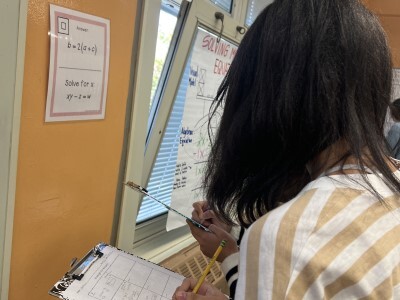How Schools Address Chronic Absenteeism with Student-Centered Learning
Topics

We’ve all had the experience of truly purposeful, authentic learning and know how valuable it is. Educators are taking the best of what we know about learning, student support, effective instruction, and interpersonal skill-building to completely reimagine schools so that students experience that kind of purposeful learning all day, every day.
Student-centered instruction can reduce the impact of chronic absenteeism on student proficiency, for students who are frequently absent and their classmates.
Chronic absenteeism has continued to rise in Chicago Public Schools and that number was about 45 percent of the district’s students in 2022, according to the Illinois State Board of Education.
When students are chronically absent, meaning they miss at least 10 percent of their days in a school year, they are missing out on instructional days. I see this trend in my Chicago high school classroom as well.
Chronic absenteeism can go unnoticed because schools are not always “examining how many and which students miss so much school,” which leads to how students fall behind, according to Attendance Works, a non-profit initiative that collaborates with districts to recognize and try to find positive solutions to the issue of chronic absenteeism.
But, what solutions are available to combat chronic absenteeism in a classroom?
One answer I’ve found is an educator-led movement and nonprofit called the Modern Classrooms Project (MCP). The model, based out of Washington, D.C., aims to meet every students’ needs through blended instruction, self-paced structures, and mastery-based grading. I am an expert mentor for MCP and I’ve led more than 50 teachers from across the country through a virtual mentorship program.
From the teachers I mentor and my own teaching of the MCP model, I see how it addresses the issue of chronic absenteeism by allowing the teacher to foster relationships and monitor students’ social-emotional growth. Teachers have time to support students due to the model’s mastery-based approach; if a student passes a lesson, they move on to the next one, which is already posted with a teacher-created instructional video. Teachers in the MCP model also can create meaningful 1-1 and small group learning interactions, which helps further build relationships with students.
Attendance Works states that when some students miss class often, this can impact the whole classroom because it affects the teacher’s ability to engage all students and meet their learning needs.
The MCP solves for this common challenge of chronic absenteeism because it uses a blended instruction model and lesson classification. Students can move at their own pace by viewing instructional videos created by their teacher. The lesson classification (assigning Must Do, Should Do, and Aspire to Do labels to assignments in a unit) differentiates and prioritizes what students need to demonstrate proficiency in. Thus absences don’t affect the whole class because students can access assignments at any time, so teachers don’t need to adjust instruction, and students who are ;present can continue their learning paths.
Even with absences, students are learning and becoming proficient with the MCP model. I have seen personal success with MCP: one of my classes—in which I fully implemented the MCP model—outperformed my school’s network average on the end of year test.
The MCP student-centered classroom reduces the impact of chronic absenteeism on student proficiency. I look forward to the positive gains that students will make this school year in my MCP classroom and in the classrooms of the teachers I mentor. I hope this 21st century classroom model grows to support more and more students who struggle with attendance.
Photo at top courtesy of Metro Institute of Technology (MIT), Columbus, Ohio.




